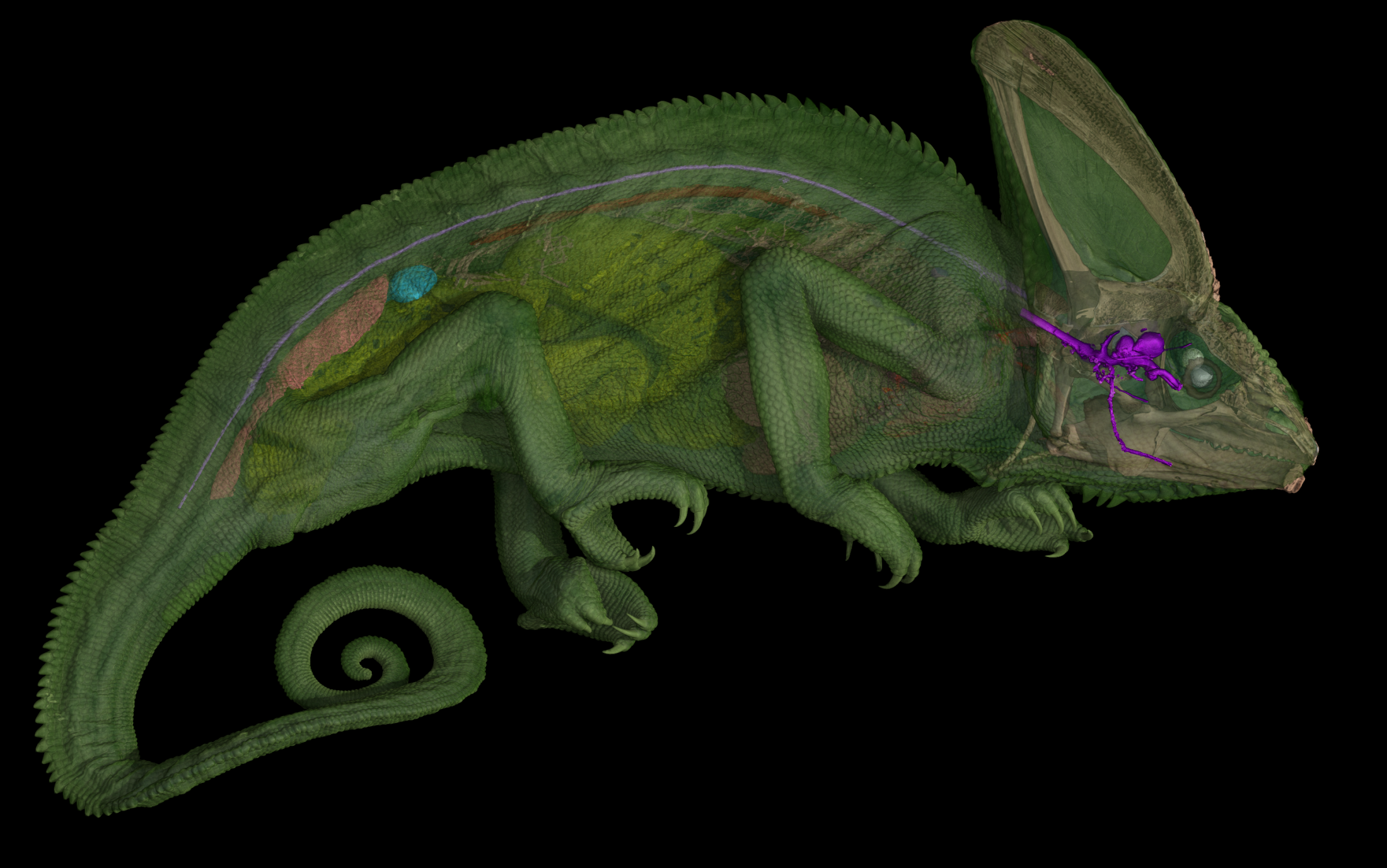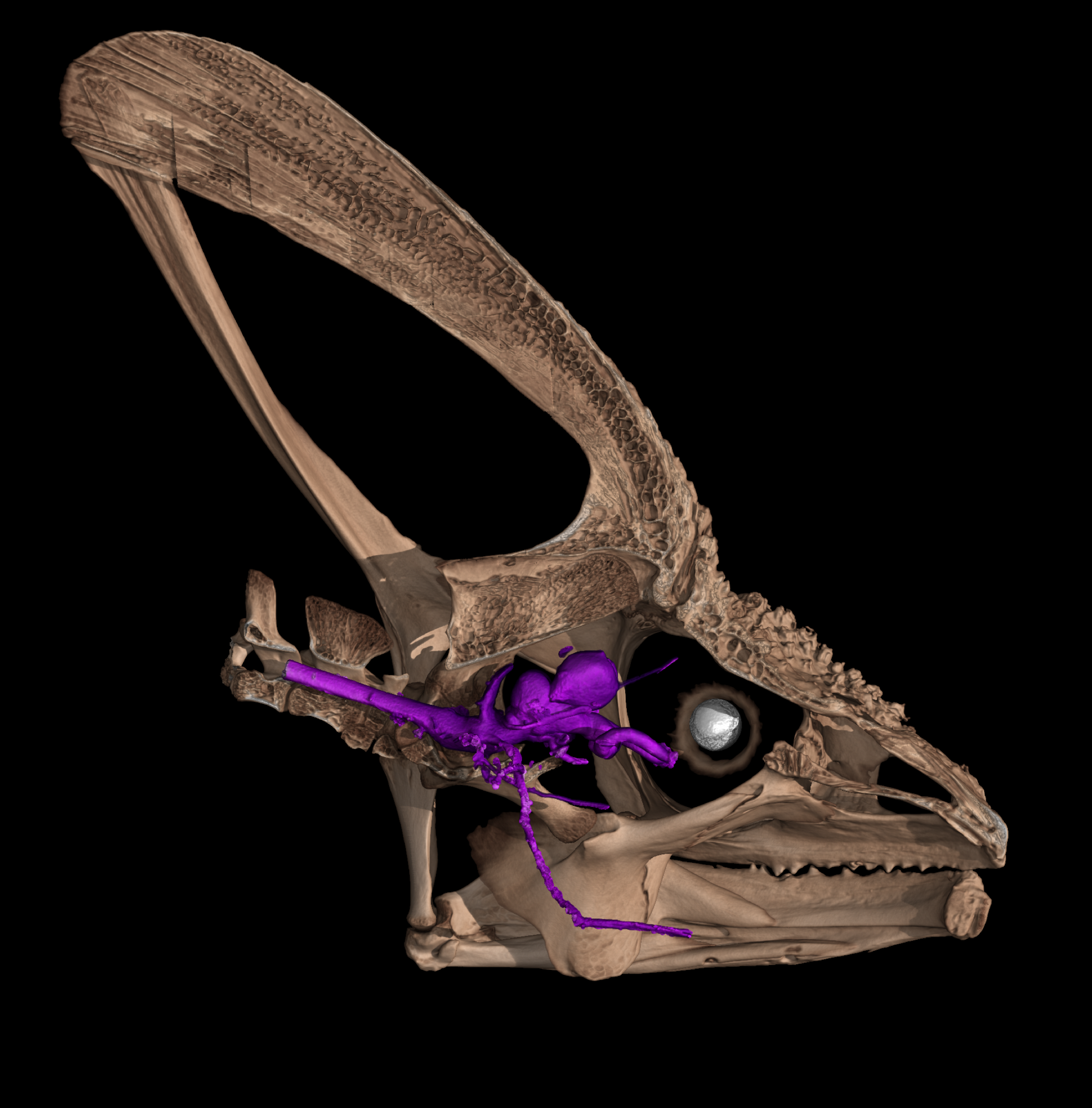Chameleons’ Optic Nerves
Coiled Optic Nerves Make Extreme Eye Rotation Possible
Chameleons possess the most mobile eyes in the vertebrate world, with each eye capable of rotating independently more than 180° horizontally and 90° vertically—all while the head remains motionless. A new study conducted by Florida Museum of Natural History and published in Scientific Reports reveals the long-overlooked structure that makes this possible: dramatically elongated, tightly coiled optic nerves that resemble old-fashioned telephone cords, providing essential slack to prevent damage during extreme eye movements.
This adaptation, present in all chameleons examined and absent in other lizards, went unnoticed for over 2,000 years—from Aristotle to modern dissections—because traditional anatomical methods inevitably straightened or destroyed the delicate coils.

A Discovery Hidden in Plain Sight
The coiled nerves were first spotted in 2017 when Edward Stanley, director of the Florida Museum of Natural History’s digital imaging laboratory, noticed an unusual structure while CT-scanning a tiny leaf chameleon (Brookesia minima) in Juan D. Daza’s lab at Sam Houston State University.
“I was surprised by the structure itself, but I was more surprised that nobody else had noticed it,” Daza said. “Chameleons are well-studied, and people have been doing anatomical studies of them for a long time.”

Only non-destructive contrast-enhanced micro-CT (DiceCT) revealed the true in-situ arrangement. As Stanley noted, “Throughout history people have looked at chameleon eyes because they’re interesting. But if you physically dissect the animal, you lose information that can tell the full story.”
Telephone Cords vs. Straight Lines
“You can compare optic nerves with old phones,” explains lead author Juan D. Daza. “The first phones just had a simple, straight cord attached to the headset, but then someone had the idea to coil the cord and give it more slack so people could walk farther while holding it. That’s what these animals are doing: They’re maximizing the range of motion of the eye by creating this coiled structure.”
In the three chameleon species studied—representing highly divergent lineages—the optic nerves are 1.7 to 3.4 times longer than the direct distance from eyeball to brain. They follow complex paths with multiple 90-degree bends and loops that unfold as the eye rotates.
All other squamates examined (31 additional species) have essentially straight optic nerves with length-to-distance ratios near 1.0. Even lizards with relatively mobile eyes, such as certain anoles and dwarf geckos, show only mild waviness.
“Chameleon eyes are like security cameras, moving in all directions,” Daza said. “They move their eyes independently while scanning their environment to find prey. And the moment they find their prey, their eyes coordinate and go in one direction so they can calculate where to shoot their tongues.”
An Evolutionary Package Deal
The coiled optic nerve is just one component of an integrated suite of adaptations for slow, cryptic ambush predation in complex 3D arboreal habitats:
- Rigid neck and shortened trunk → almost no head movement
- Enormous, turret-like eyes → massive visual field
- Loss of the epipterygoid bone → extra space for nerve coiling
- Telephone-cord optic nerves → slack for extreme rotation without strain
The trait develops early: in veiled chameleon embryos, the nerves begin straight but progressively lengthen and loop, achieving the full adult pattern before hatching—so even day-old chameleons can scan independently in all directions.
Why Centuries of Scientists Missed It
Aristotle believed chameleon eyes connected directly to the brain with no optic nerves at all. In the 1600s, Domenico Panaroli claimed the nerves existed but never crossed (a view Isaac Newton repeated in his 1704 book Opticks). Seventeenth-century anatomist Claude Perrault came closest, illustrating crossing nerves that continued forward, but even his drawings lacked the coils. Later works by Johann Fischer (1852) and others showed only partial curves.
Every previous description relied on dissection, which inevitably pulled the nerves straight. Only modern, non-invasive imaging—now freely available through initiatives like oVert (openVertebrate)—has finally exposed the complete morphology.
Broader Implications
The discovery highlights how much sophisticated bioengineering remains hidden in well-studied animals and underscores the transformative power of digital anatomy collections. Similar coiled or wavy nerve strategies appear convergently in stalk-eyed flies and larval deep-sea fish, suggesting a general solution to the biomechanical challenge of extreme eye mobility poses.
As Daza and colleagues conclude, the chameleon optic nerve represents yet another remarkable example of nature solving engineering problems with elegant simplicity.
